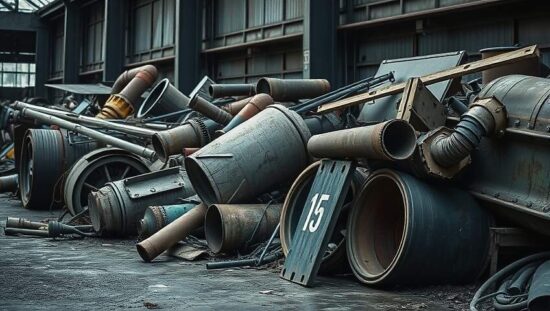Official data released this week indicates a continued downward trend in the generation of hazardous waste in Germany. According to the Federal Statistical Office (Destatis), a total of 22.5 million metric tons of hazardous waste were produced in 2023. This represents a decrease of 2.4 percent, equivalent to 0.6 million tons, compared to the 23.1 million tons recorded in 2022. The figure marks the lowest level of hazardous waste generation since 2015.
Hazardous waste is defined as waste materials exhibiting characteristics such as flammability, carcinogenicity, or irritancy, posing a potential threat to human health and the environment. Strict tracking and specialized disposal procedures are mandated to ensure the safe destruction of contained pollutants and minimize environmental impact.
Examining waste composition, construction and demolition debris remained the largest contributor to the total volume of hazardous waste, mirroring trends from previous years. In 2023, this category accounted for 8.6 million tons, representing 38.4 percent of the total. Waste from treatment facilities, including wastewater purification plants and water treatment facilities, comprised the second-largest portion at 7.0 million tons, or 31.0 percent. These figures differ slightly from 2022, when construction debris accounted for 9.3 million tons (40.2 percent) and waste from treatment facilities contributed 6.8 million tons (29.3 percent).
The majority of hazardous waste originates from two key economic sectors. The “Water supply; waste, wastewater and remediation” sector contributed 9.1 million tons, representing 40.3 percent of the total. This includes disposal sites and facilities processing liquid waste containing organic matter, which, if improperly managed, can indirectly pollute waterways. The “Manufacturing” sector accounted for 4.9 million tons, or 21.5 percent of hazardous waste, largely stemming from businesses involved in the production of machinery, metal products and chemicals. In 2022, these respective shares were 9.4 million tons (40.8 percent) and 4.7 million tons (20.4 percent).
Primary producers – those businesses where hazardous waste is initially generated – were responsible for 16.1 million tons of the total in 2023, equating to 71.6 percent of the volume. This represents a decrease of 0.9 million tons compared to 2022. Secondary producers, including storage facilities and waste management companies, handled the remaining 6.4 million tons (28.4 percent), a reduction of 0.3 million tons from the previous year.





